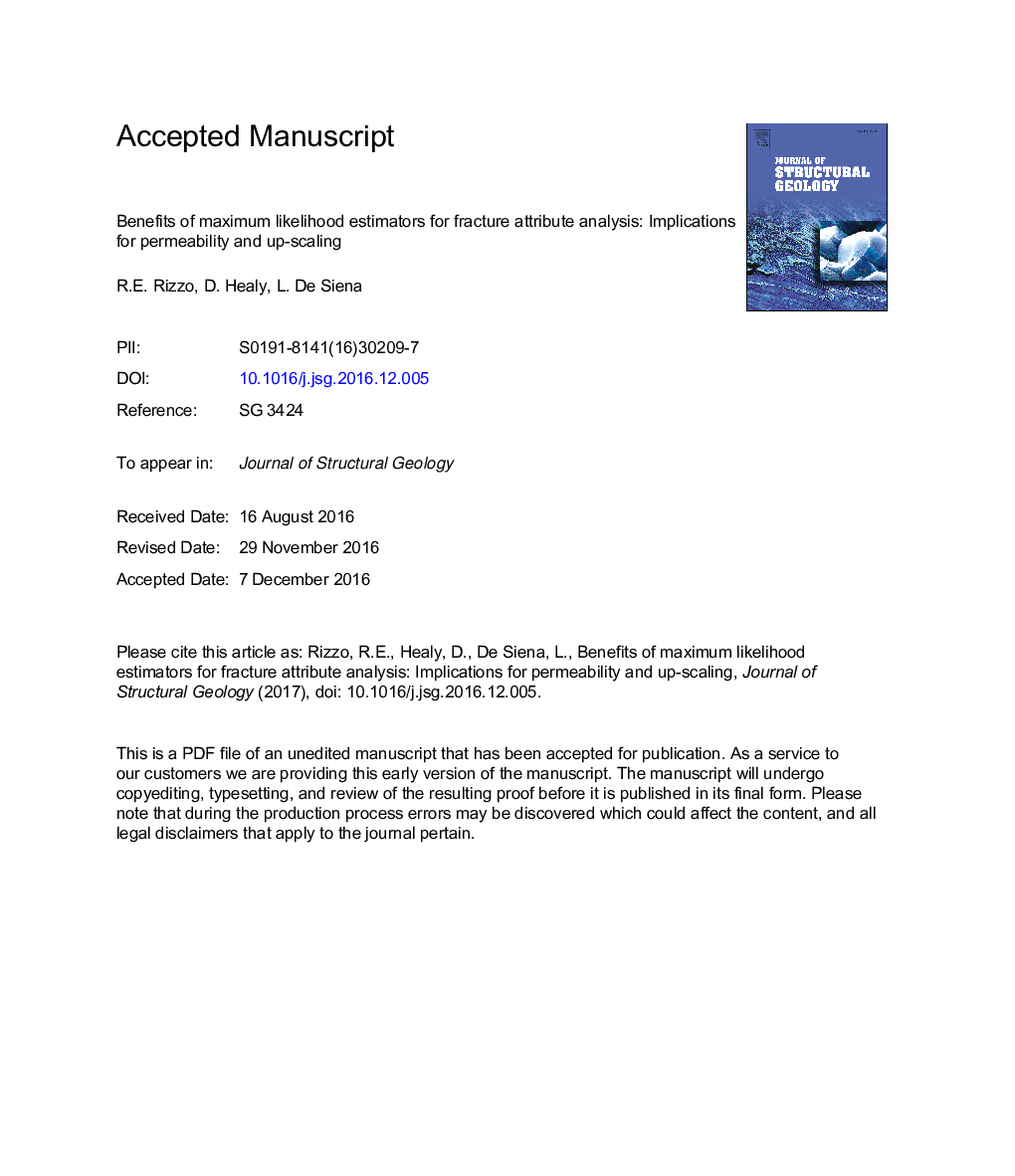| Article ID | Journal | Published Year | Pages | File Type |
|---|---|---|---|---|
| 5786357 | Journal of Structural Geology | 2017 | 51 Pages |
Abstract
The success of any predictive model is largely dependent on the accuracy with which its parameters are known. When characterising fracture networks in rocks, one of the main issues is accurately scaling the parameters governing the distribution of fracture attributes. Optimal characterisation and analysis of fracture lengths and apertures are fundamental to estimate bulk permeability and therefore fluid flow, especially for rocks with low primary porosity where most of the flow takes place within fractures. We collected outcrop data from a fractured upper Miocene biosiliceous mudstone formation (California, USA), which exhibits seepage of bitumen-rich fluids through the fractures. The dataset was analysed using Maximum Likelihood Estimators to extract the underlying scaling parameters, and we found a log-normal distribution to be the best representative statistic for both fracture lengths and apertures in the study area. By applying Maximum Likelihood Estimators on outcrop fracture data, we generate fracture network models with the same statistical attributes to the ones observed on outcrop, from which we can achieve more robust predictions of bulk permeability.
Related Topics
Physical Sciences and Engineering
Earth and Planetary Sciences
Geology
Authors
R.E. Rizzo, D. Healy, L. De Siena,
